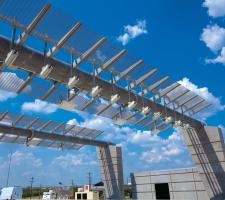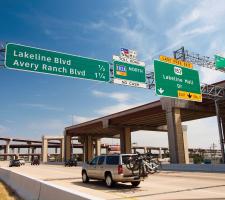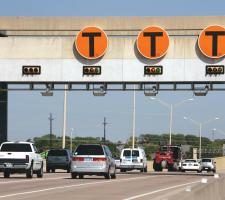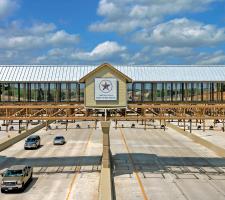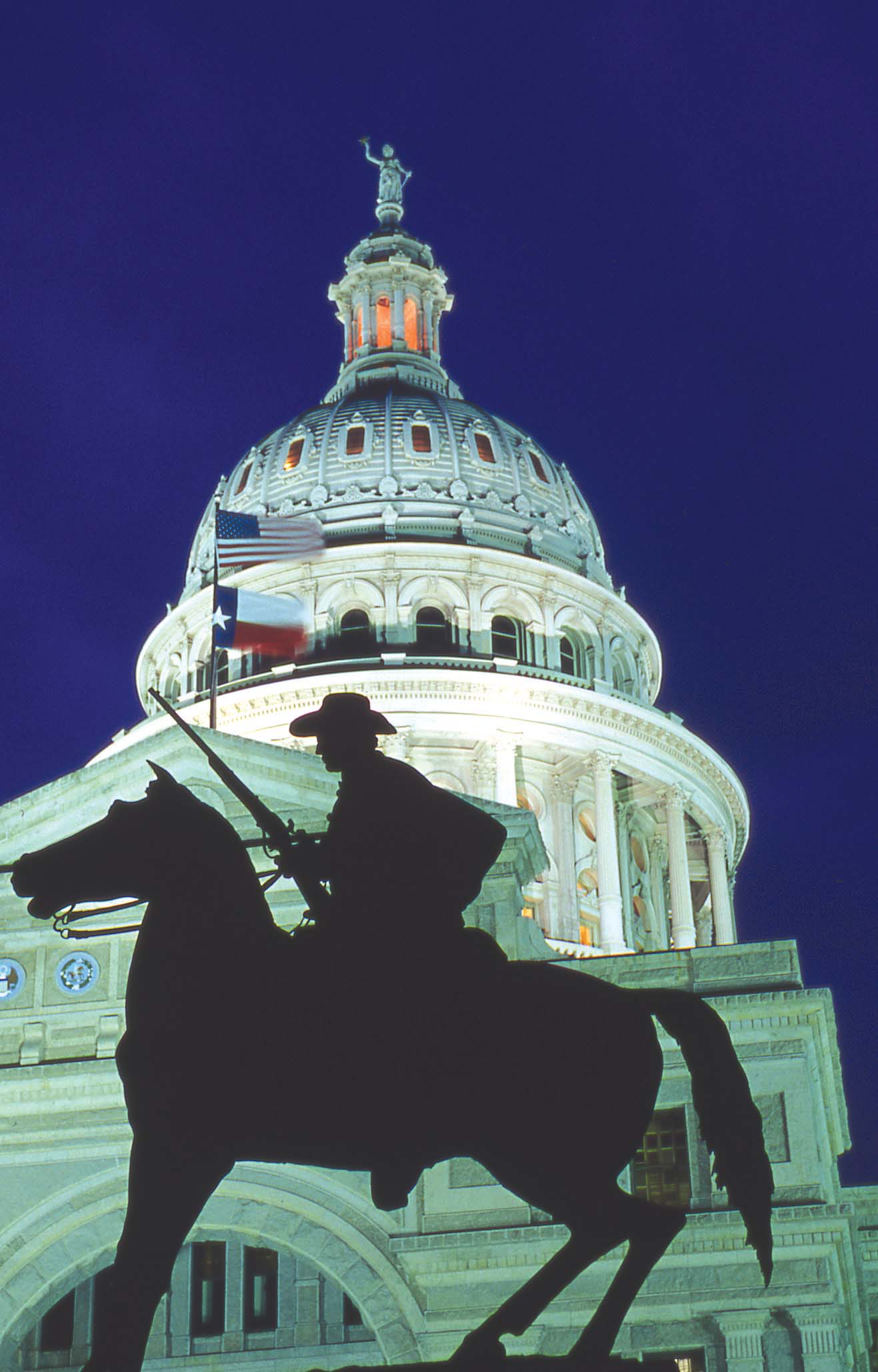
As the IBTTA’s annual meeting and exhibition heads for Austin, Mitchell Beer, president of Smarter Shift, considers the role of Texas in the development of tolling strategies and technology.
The State of Texas has always prided itself on being ‘larger than life’. From the sprawling geography of the state itself with its wide open skies, to its entrepreneurial ‘get-it-done’ attitude, Texas exudes an impatient restlessness that pushes businesses and public agencies to deliver faster, better results.
More often than not, that attitude pays off. But now, with burgeoning population and economic growth, Texas has acquired some outsized challenges, including big congestion and big highway budgets while holding on to those big expectations from businesses and commuters in search of safe, reliable mobility for people and products.
All of which has made the state an incubator for every imaginable use of tolling and toll revenues, including the roadside and back office technologies that are essential to modern toll operations.
“Today, most tolling agencies are also technology agencies,” said Mike Heiligenstein, president of the
“We’re in a world where people expect things to be seamless, and the latest tolling technology makes that seamless factor possible, within and across agencies.”
What’s up with Texas?
Last October, the U.S. edition of Time Magazine published a cover feature that captured some of the challenges Texas faces, as well as ‘a certain coolness factor’ that attracts more new arrivals from other states than any other part of America.
“To a lot of Americans, Texas feels like the future,” wrote economist Tyler Cowen. Texas isn’t immune to the economic pressures buffeting the United States and other countries, but “it just may be the friendliest state for those who worry about their prospects in this new normal.”
The state boasts a strong job market, and “more crucially, it’s cheaper to live in Texas and cheaper to thrive there, too,” Cowen continued. “Don’t underestimate the power of that lower cost of living, for it can be the difference between a trailer and an apartment—between an apartment and a home.”
But anyone who works in transportation can read the subtext behind the Texas story: It takes safe, efficient highways to connect the dots between opportunity and success, to ease the daily commute from home, to work, to schools and day care, to the vibrant nightlife that keeps a town like Austin on the map.
The faster Texas has grown, the more tolling agencies have had to boost their capabilities, often breaking important new ground in everything from all-electronic tolling, to variably priced express lanes (VPEL), to smartphone apps that facilitate the highway journey and could soon be handling motorists’ payments.
“In Texas, we’re taking transportation to a much higher level,” Heiligenstein said. “We have limited ability to add new pavement, but if we include technology, we can provide more reliability for the driver, and that’s really important.”
The innovation incubator
Heiligenstein points to interoperability and video tolling, VPEL and smartphone apps are areas where tolling technology has driven a wave of innovation in Texas.
Electronic tolling is pretty much a done deal across the state, with most agencies embracing video tolling as a viable alternative to transponders and tags. “How back offices are handled, and how the interactions and interoperability among different agencies will be set up, depends heavily on the tolling technology,” he said.
As for express and managed lanes, none of the congestion-busting pricing structures in a community like Austin would be possible without advanced tolling technology.
“The algorithms and the back office structures that go with VPELs have been crucial to implementing smarter highways - and smarter highways is what it’s all about in Central Texas and in other jurisdictions across the state,” said Heiligenstein. “At the end of the day this is a much better deal for our road users – the ultimate reason the Mobility Authority is here to begin with.”
In recent years Texas has been the testbed for a number of innovations and now the Mobility Authority is progressing quickly on the MoPac Expressway Improvement Project, a VPEL project that will give drivers the option of avoiding congestion along an 11-mile corridor. MoPac currently carries 180,000 cars and trucks per day, and planners’ project daily volume of 320,000 vehicles by 2030. The success of the project could well lead to additional VPELs in the region, creating a critical mass that would assist drivers getting around the region.
Also underway is a public private partnership pilot project with the Mobility Authority and Carma Carpooling, a smartphone app that matches casual carpoolers in the Austin area. Carma Carpool drivers get toll reimbursements when they carpool along the Mobility Authority’s 183A and Manor Expressway toll roads. With the Carma app, two-person carpools get 50% of the toll refunded while carpools with three or more people will be fully reimbursed. The Mobility Authority is also working on implementing a rewards-based trip-planning smartphone app. Drivers using the app will earn rewards when they travel in off-peak commuting hours and get to their destinations faster with real-time trip predictions, route mapping, voice navigation and emergency alerts.
In addition, the availability of the requisite technology has also had significant financial impacts: the VPEL and its technology has led to the creation of a Regional Infrastructure Fund that will be funded with surplus revenue from the VPEL. This will then create upwards of an additional half-billion dollars in new revenues destined for future transportation projects.
Interoperability has long been a reality with North Texas Tollway Authority (
Financially, the Strategic Projects Division of the Texas Department of Transportation is supporting the drive toward public-private partnerships. These have brought new funds into the system, quickly enough to meet the mobility needs of the 1,000 new residents who move into the state each day.
A dedicated revenue stream
Last March, at IBTTA’s summit on Legislation, Policy & Infrastructure Finance, state senator Robert Nichols traced Texas’ striking success with state and local mobility initiatives to a constitutional provision that dedicates transportation revenue to pay for roads and bridges through the Texas Mobility Fund. The state hasn’t taken the politically unpopular step of raising its gas tax to cope with rapid growth. Instead, the Mobility Fund brings in about $400 million per year for current projects by issuing bonds and borrowing against future revenues. In the next year, the state’s voters will also be asked to dedicate about $1.4 billion in annual oil and gas royalties to highway projects.
But even with strong public support for non-tolled transportation, state and regional authorities still have pressing infrastructure needs that point to tolling as a growing contributor to the funding available. That imperative has driven cutting-edge technology options and creative business models that are applicable to other jurisdictions.
Heiligenstein said: “The steps that toll agencies in Texas are taking in response to increased congestion are still relevant to areas that don’t have quite as much growth. Another metropolitan area that isn’t looking at the same demand curve is certainly still looking at increasing vehicle miles travelled. And there are many areas that might have opted for a congestion-priced facility when they first built their freeways, if that had been available.”
Some jurisdictions have mobility and congestion issues that date back decades. In a community like Dallas, Houston, or Austin, “they’ll see what managed lanes can do, not just for single-occupant vehicles, but also for express buses and transit,” he said.
“It’s important for the tolling industry to look beyond toll roads to see the entire transportation network as a system.”
The customer comes first
“At the Mobility Authority, our job is to provide mobility to the people of this region – our ‘customers’. Whether it’s on Interstate highways, state routes, express lanes, bus and rail transit, bike paths or all of the above, the customer is at the center of everything we do,” Heiligenstein said. “Our job is to figure out what our customers want and need and to deliver mobility services as effectively as possible.”
Across the tolling industry, agencies routinely find that familiarity boosts public buy-in. Drivers (also known as voters) are more likely to support a new toll road if they’ve had a say in the planning, and especially if they see that the tolls they pay will support mobility improvements along the corridors they drive.
Tolling agencies have learned that ‘seeing is believing’. Once a project is completed and drivers experience the efficiency of all-electronic tolling, or the reliability of an Express Lane, the testimonials start to roll in: from those who can now manage their commutes with more predictability and less aggravation.
The first step is to build a relationship with ‘customers’ and genuinely, visibly listen to their interests and concerns. And just as the road itself is enabled by the hardware and software that enable modern tolling, customer satisfaction depends on a host of emerging technologies—from customer relationship management, to predictive analytics, to emergency messaging and more – all ITS solutions.
When IBTTA’s 82nd Annual Meeting and Exhibition convenes in Austin September 14-17, the conference will explore and highlight many innovations and new methods of thinking about transportation that are being used in Texas. The Lone Star state is truly a toll industry laboratory moving forward.
“The on-the-ground solutions that have taken shape across the state are as unique and varied as the communities that created them,” said Heiligenstein. “A laboratory is a place where not every experiment ‘succeeds,’ but every attempt is a chance to learn what works and imagine what’s next to enhance our communities and customers’ transportation needs. The challenge is to efficiently use the resources we have to provide the best possible traveling experience for our customers.
- Delegates to IBTTA’s 82nd Annual Meeting and Exhibition (Austin, Texas 14-17 September) can get a first-hand look at the Texas experience, and at tolling applications from around the world that are ready to be applied in new situations and settings. <%$Linker:
2 External <?xml version="1.0" encoding="utf-16"?><dictionary /> 0 0 0 oLinkExternal www.ibtta.org/austin Visit IBTTA Austin Website false http://www.ibtta.org/austin true false %>


